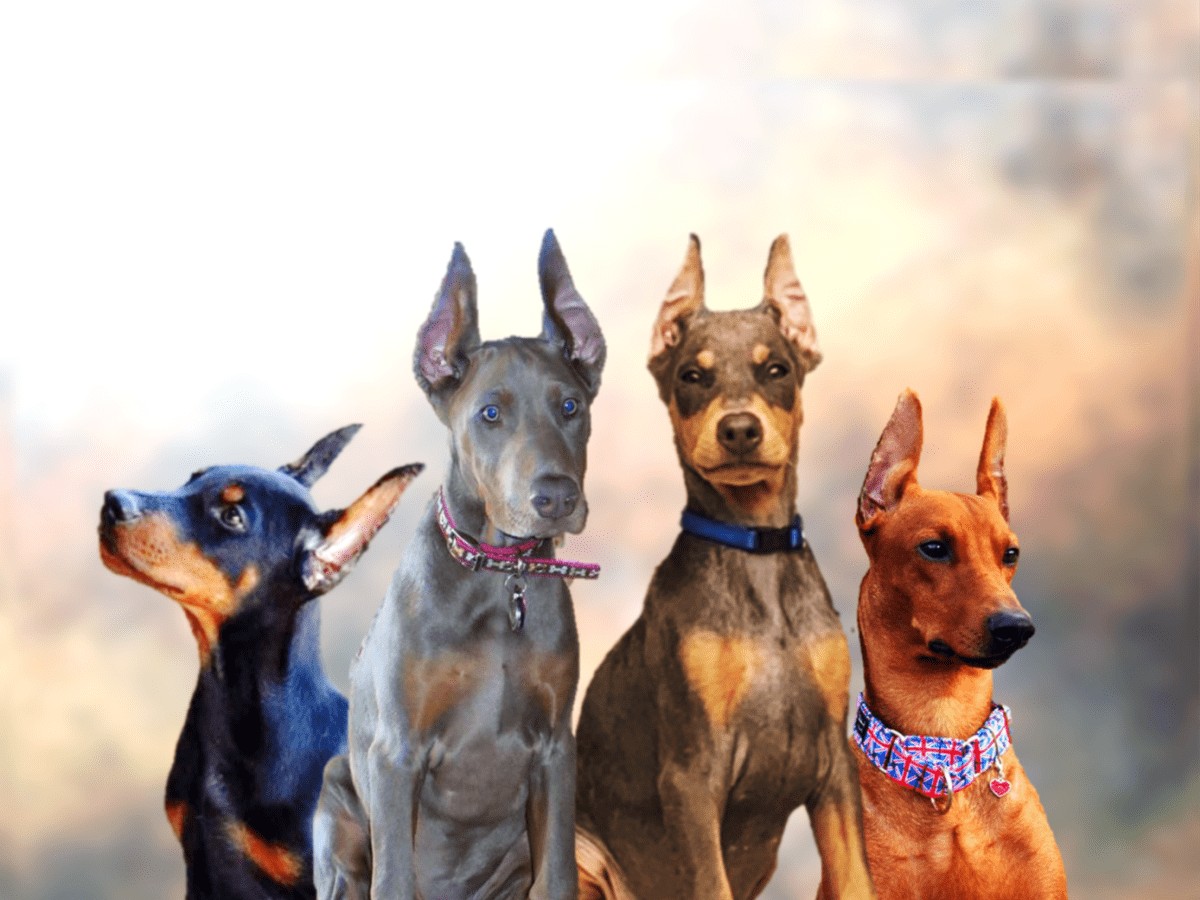
The Doberman Pinscher, known for its striking appearance and noble temperament, exhibits a fascinating array of coat colors that contribute to its distinctive look. While black and rust remains the most prevalent combination, the breed features several officially recognized colors including red, blue, and fawn (Isabella) - each paired with rust markings. These color variations result from specific genetic combinations involving black genes and color dilution factors. Though some rare colors like white and melanistic black exist, they often face controversy within breeding circles due to associated health concerns and deviation from breed standards.
Different Colors of Dobermans
Rust Markings Placement
The rust or tan markings in Dobermans follow a specific pattern according to breed standards. The markings appear:
- Above each eye
- On the muzzle and cheeks
- On the throat
- Two spots on the chest
- On all four legs between ankles and toes
- Inside of hind thigh
- Under the tail
- On the forearms
Genetic Color Inheritance
The color inheritance in Dobermans is determined by two key genes as outlined by experts:
- Black gene (B) - Dominant over red (b)
- Color dilution gene (D) - Creates diluted versions when recessive (d)
- BBDD genotype produces black and rust
- bbDD genotype produces red and rust
- BBdd genotype produces blue and rust
- bbdd genotype produces fawn/Isabella and rust
Introduction to Doberman Colors and Types
Standard vs Non-Standard Colors
According to breed experts, Doberman colors fall into two categories:
Standard Colors (AKC Recognized):
- Black and rust
- Red and rust
- Blue and rust
- Fawn/Isabella and rust
Non-Standard Colors:
- White/cream
- Melanistic (solid) variations
- Albino
Color Distribution Statistics
Based on recent data, the popularity distribution of Doberman colors is:
- Black and rust: 62%
- Red and rust: 24%
- Blue and rust: 8%
- Fawn/Isabella and rust: 6%
While the previous genetics section covered inheritance patterns, these statistics demonstrate the real-world prevalence of each color variation in the breed population. The data highlights black and rust as the overwhelmingly dominant color combination.
Standard and Non-Standard Doberman Colors
Breed Standard Color Requirements
While previous sections covered color distribution statistics, this section focuses on specific breed standard requirements. According to the American Kennel Club, standard colors must meet strict criteria:
- Markings must be clearly defined without bleeding or mixing
- Rust markings must be rich in color, not pale or washed out
- Black and red must be pure in tone without dilution
- No white patches exceeding 1/2 inch allowed on chest
Health Implications of Color Varieties
Building upon earlier genetic information, research from Doberman Planet indicates specific health concerns linked to certain colors:
- Dilute colors (blue/fawn) have 75-93% chance of color dilution alopecia
- White/cream dogs face increased cancer and vision risks
- Black coats absorb more heat, requiring extra sun protection
- Red coats show higher skin sensitivity and allergy rates
Different Colors of Dobermans
Temperament Variations by Color
While previous sections covered physical traits, research indicates potential temperament differences between colors:
- Red/rust Dobermans tend to be more easygoing and less territorial
- White/cream varieties show increased anxiety and fear responses due to vision impairment
- Standard colors (black, red) generally display more balanced temperaments
- No scientific evidence confirms direct color-temperament links
Show Ring Preferences
According to breed standards, color impacts show competition acceptance:
- Black/rust most favored in competitions
- Blue/fawn face limitations in some shows
- White/cream disqualified from most shows
- Melanistic varieties not eligible for competition
- Eye color must match coat - darker eyes preferred for black/red dogs, amber acceptable for blue/fawn
Conclusion
Doberman Pinschers come in four standard AKC-recognized colors: black and rust (62%), red and rust (24%), blue and rust (8%), and fawn/Isabella and rust (6%). These colors are determined by specific genetic inheritance patterns involving black and dilution genes. Each color variety features standardized rust/tan markings in designated locations including above the eyes, on the muzzle, chest, legs and other areas. While non-standard colors like white/cream and melanistic variations exist, they are not recognized for show competitions and may face increased health risks.
The research reveals important implications regarding both aesthetics and health. Dilute colors have a high probability of developing color dilution alopecia, while white/cream Dobermans face elevated cancer and vision risks. Though some believe coat color may influence temperament, there is no scientific evidence confirming direct links between color and personality traits. For breed preservation and health optimization, careful consideration should be given to color genetics in breeding programs, with emphasis on maintaining the robust standard colors while being mindful of potential health issues in dilute and non-standard varieties.